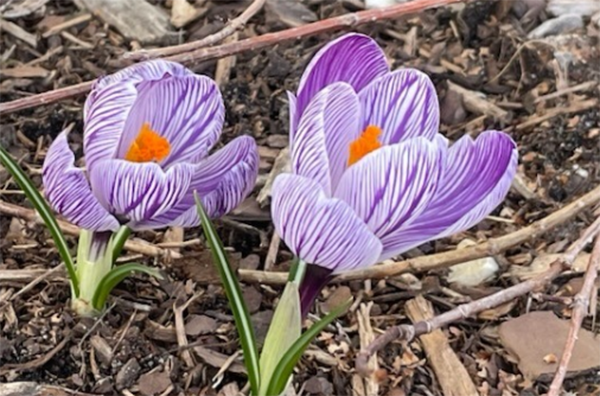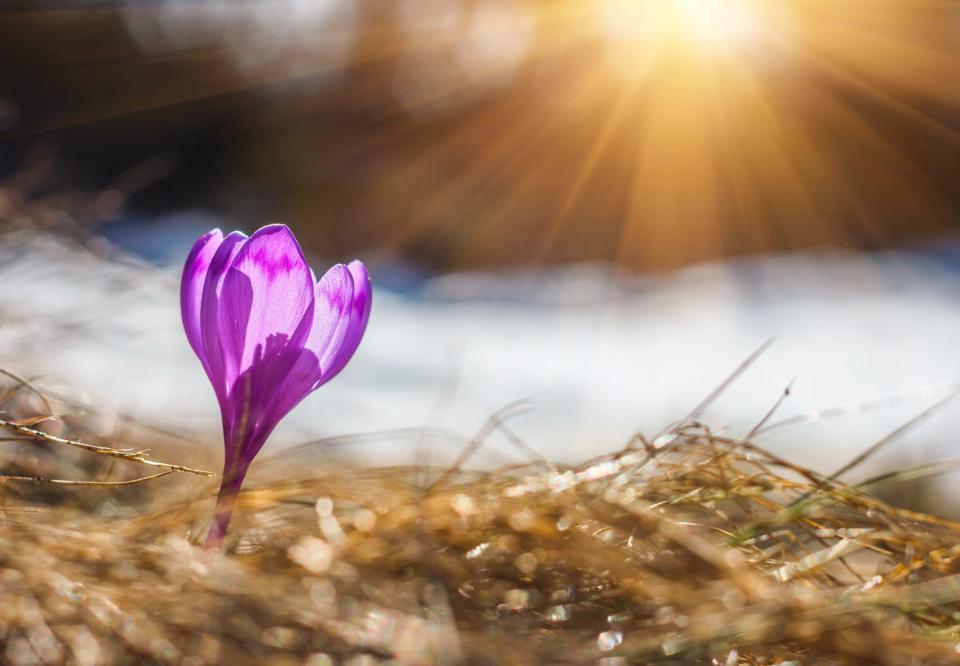Time in a Garden: Spring rituals

It’s the time of the equinox, Easter, Passover, Ramadan. Spring fires and rituals abound as the garden becomes a place of new life and renewal. With all the digging and weeding and transplanting that lies ahead of us, we gardeners now more than ever need to remind ourselves that those gardens of ours first and foremost are sacred spaces and not just construction zones.

Flowers and fruits of the earth are depicted as among the offerings to the god of the sun in Akhenaten’s monotheistic Egypt in the 13th century BCE. The Abrahamic religions — Jewish, Christian and Islamic — share the image of the garden as the site of Paradise. The Genesis story of the newly created Adam meeting the Creator on a stroll through the garden in the cool of the day awakens powerful spiritual whisperings in the human heart.
I never begin my days in Northern Michigan summer without first a walk through my own precious gardens, connecting with the sights and sounds and smells of the awakening earth. That ritual grounds me. And those instincts are why, whenever possible, I garden barefoot and sans gloves — a practice that allows me to experience the plants and dirt and feel of damp leaves at their most up-close-and-personal. Ditto for the garden walks at twilight.
As a Chinese proverb express it: “Life begins the day you start a garden.” I can’t think of a more existential description of what plants and green things growing mean in our spiritual lives. Gardens civilize us. In them we see order and nature’s way of doing things.

As a spiritual exercise or practice, gardening teaches us humility and patience. The gardening life is not about mastery — but rather, a journey upon which we embark when we forge intimate relationships with the earth. Gardens both reveal and forgive our shortcomings and limitations. They gift us with resilience and hope.
In my imagination, I can feel not just glimpse the glow of the fairy lights in my garden as I look down upon it from the midnight of my bedroom window. I can feel the damp chill of the ground on late spring evenings or in the fall when I begin to contemplate putting my garden to bed. In spite and because of my life as a gardener, rebirth comes in the spring even though the winter may be harsh and seemingly relentless.
There are forces at work in the garden that both challenge and elude. There is Mystery. The rhythms of the earth resonate in the strands of my own DNA. In the garden I am both creature and co-creator with nature. I am a child again splashing in pools left behind after a day-long gardener’s rain. And in the sighing of the branches, I sense the Holy passing by as Adam once did: awestruck at how beautiful life is and the world and everything in it.
Sacred space, indeed.
Author of the 2006 regional best-selling novel "Time in a Garden," Mary Agria has won six consecutive awards from Michigan Garden Clubs for feature writing since 2017. Her "An Itinerant Gardener's Book of Days," gardening novels and books on gardening and spirituality are available online and from local bookstores.
This article originally appeared on The Petoskey News-Review: Time in a Garden: Spring rituals

